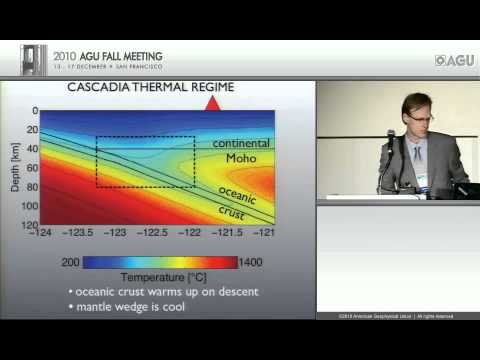Description:
Explore the complex dynamics of water in the Cascadia forearc through this Gutenberg Lecture presented at the 2010 AGU Fall Meeting. Delve into M. G. Bostock's research from the University of British Columbia's Earth and Ocean Sciences department as he examines three profiles and two key features of the region. Investigate hot spots, cascading effects, and comparisons with Southwest Japan. Analyze raw features, including the transformation of peridotite to water, compressional wave velocity, and the vanishing Moho. Examine evidence from oceanic crust and the Polaris profile, while considering interval properties and laboratory measurements. Uncover the implications for plate boundary permeability, the relationship between BP and porosity, and tremor activity in Cascadia. Gain insights into velocity reductions and their significance in understanding the fate of water in this geologically active area.

The Fate of Water in the Cascadia Forearc
Add to list
#Science
#Earth Science
#Geophysics
#Plate Tectonics
#Seismology
#Geology
#Hydrogeology
#Subduction Zones